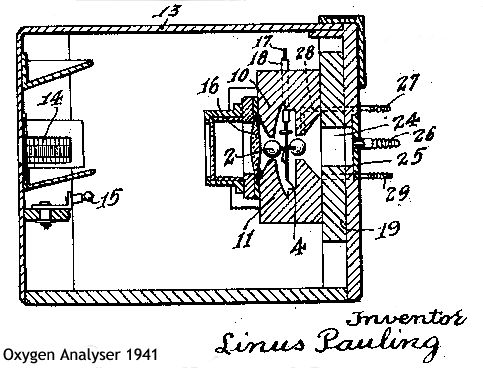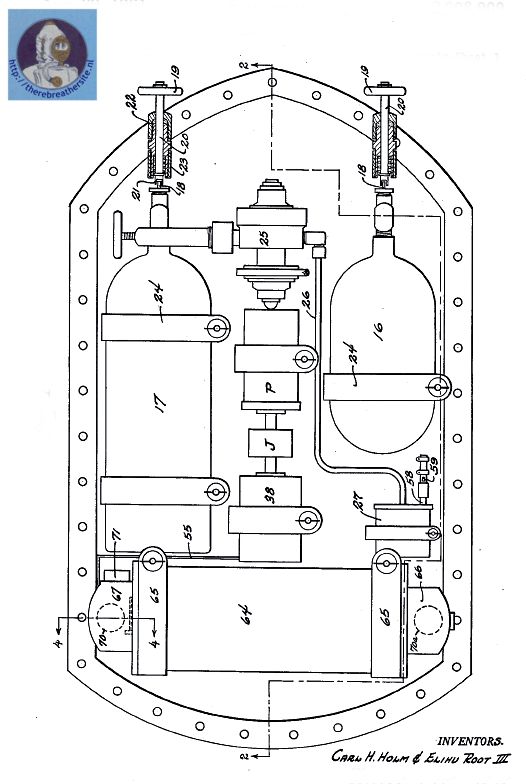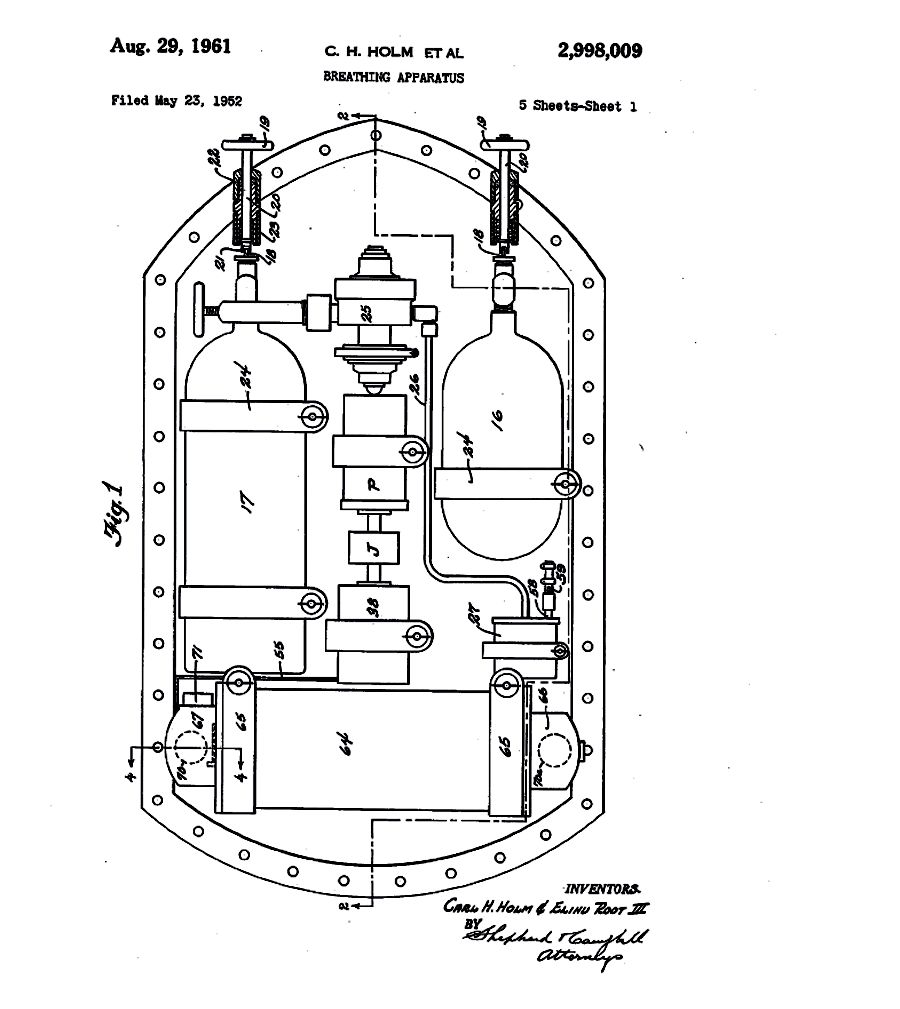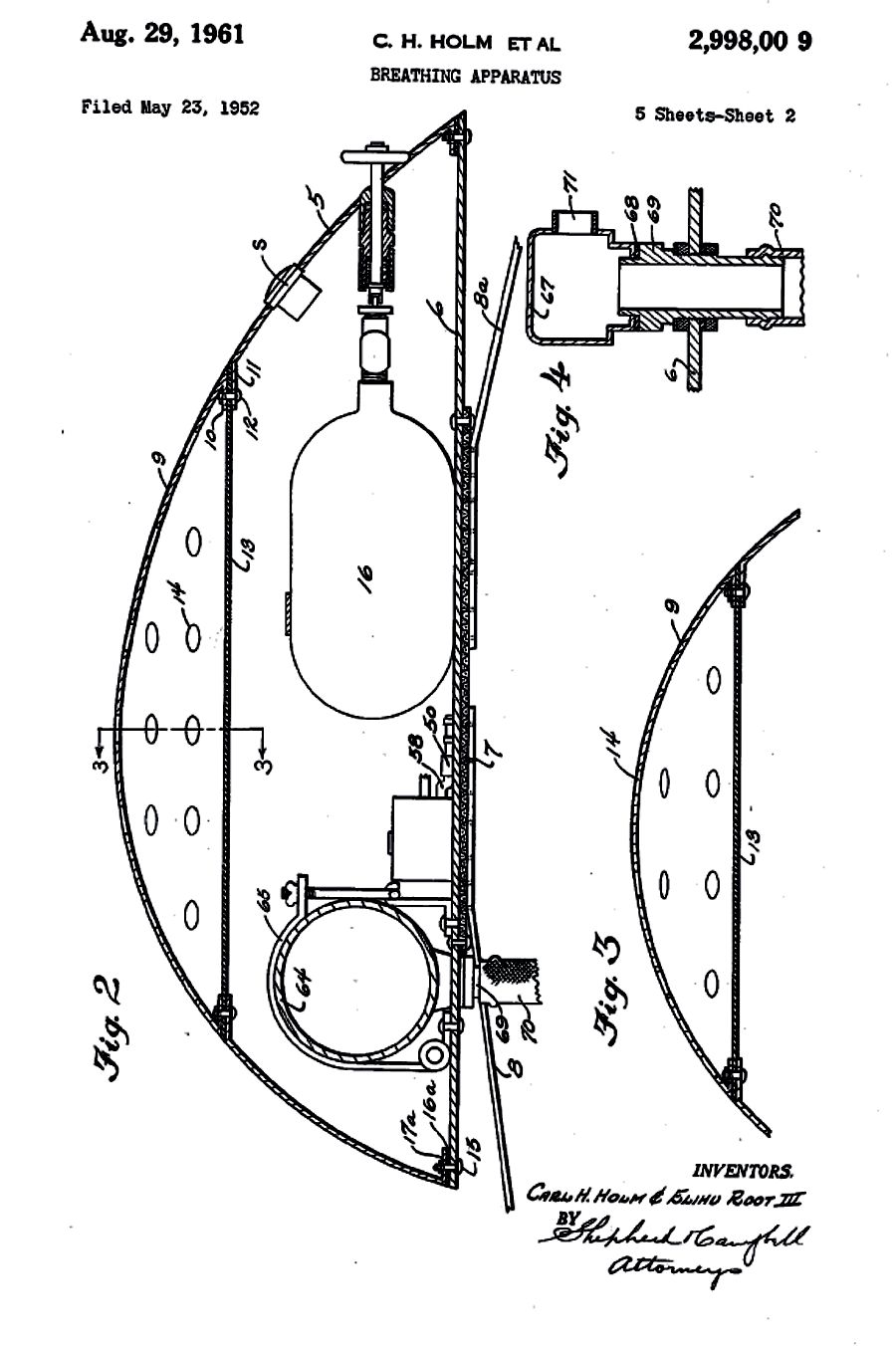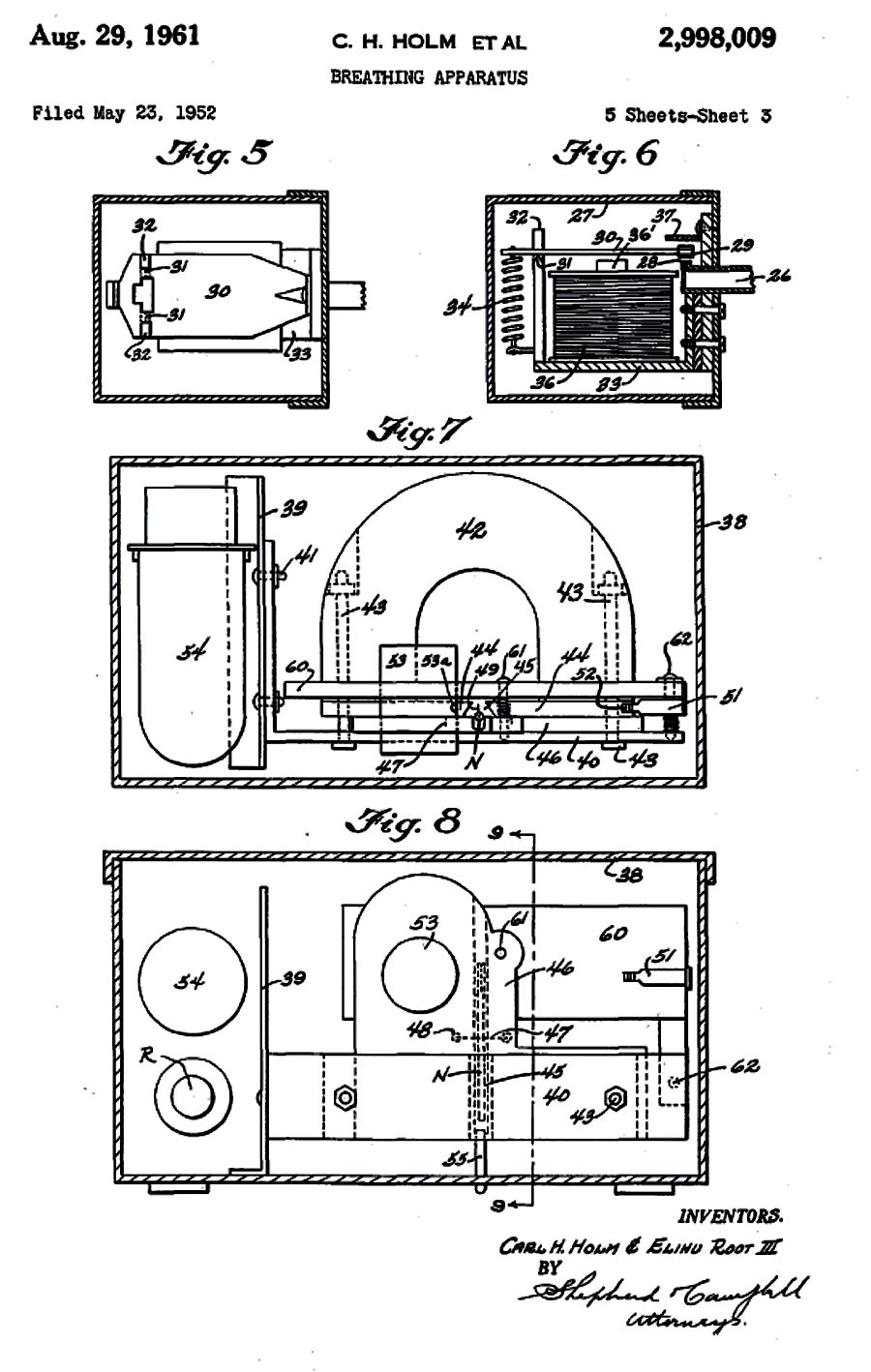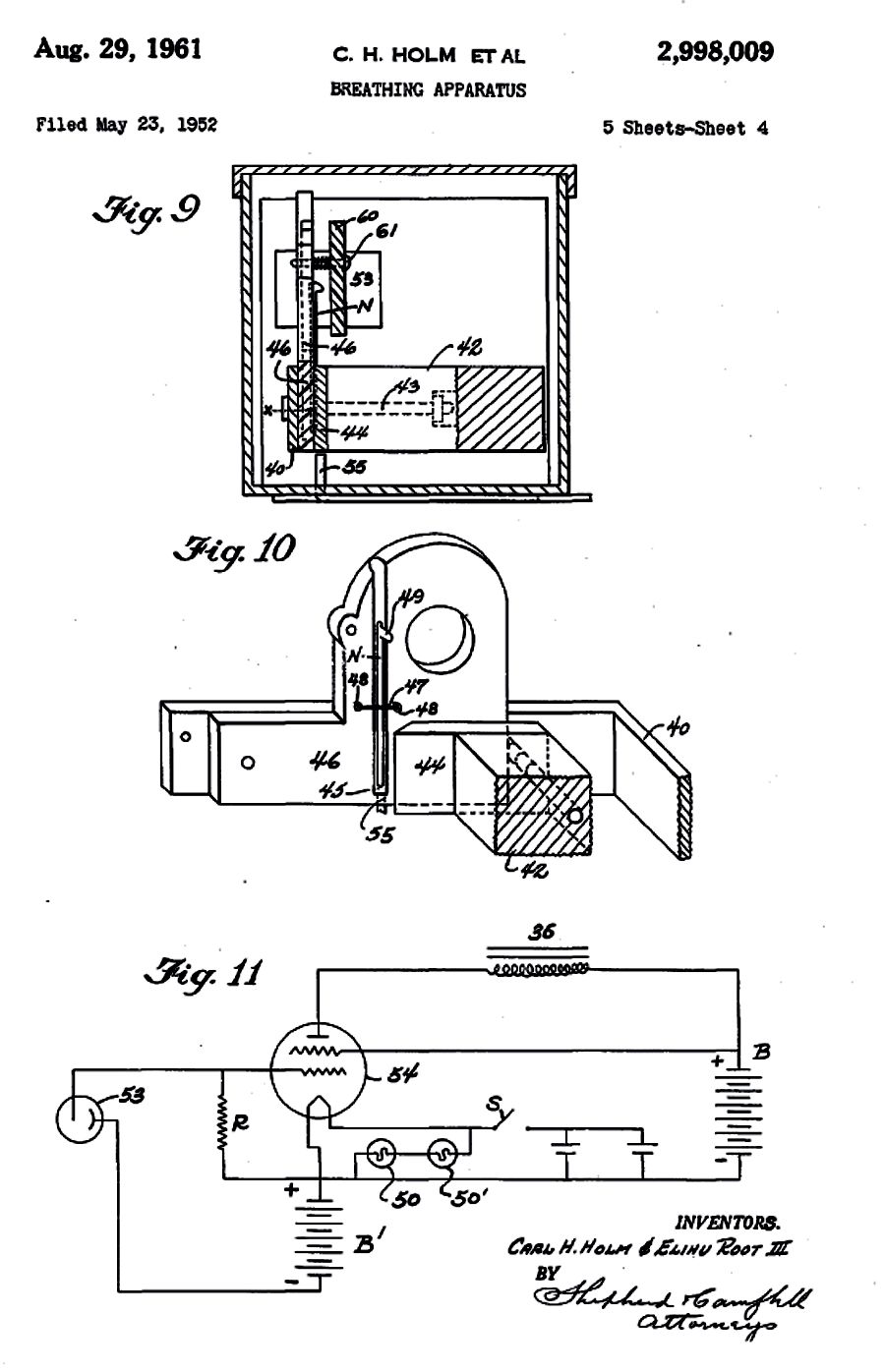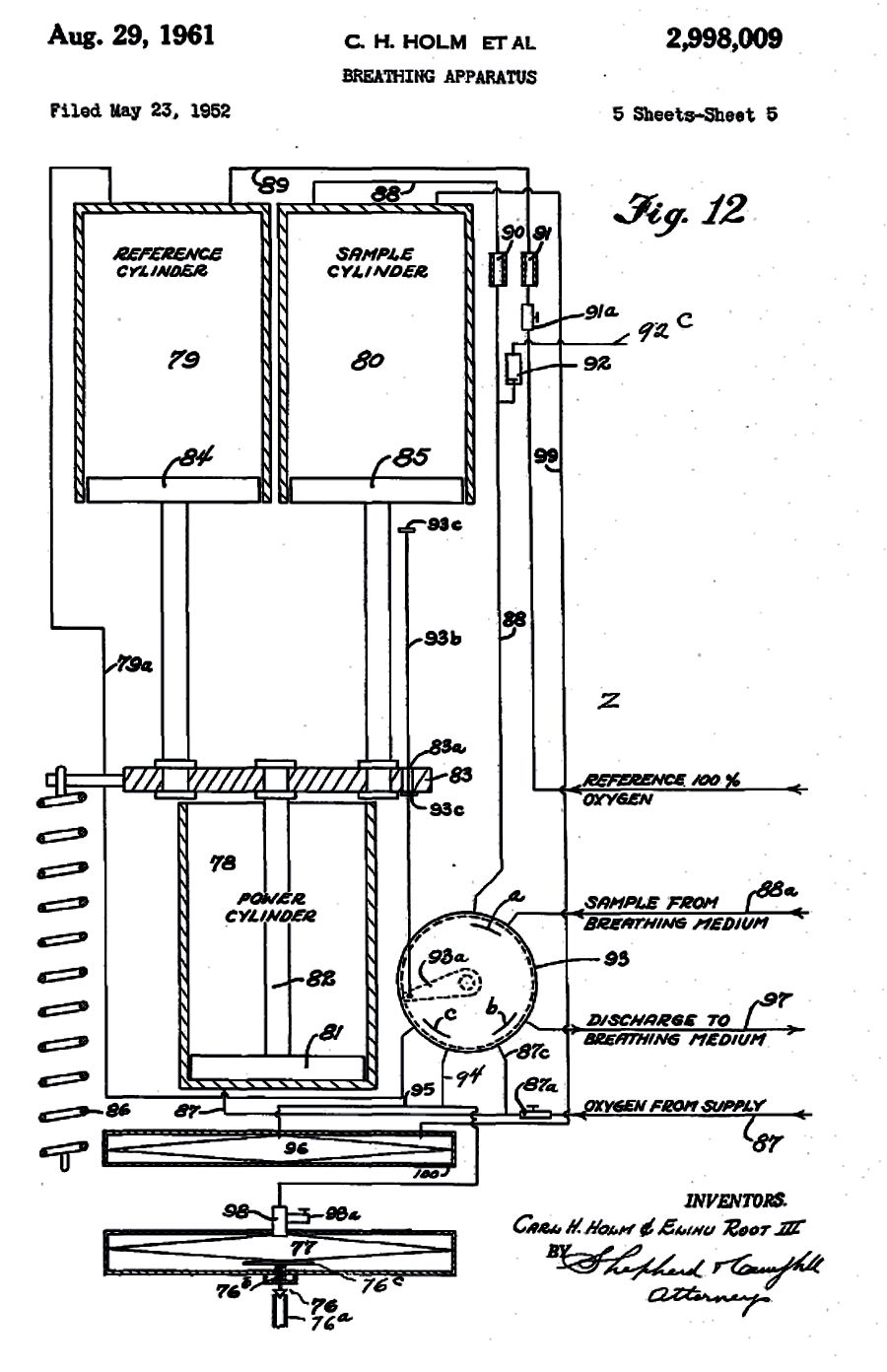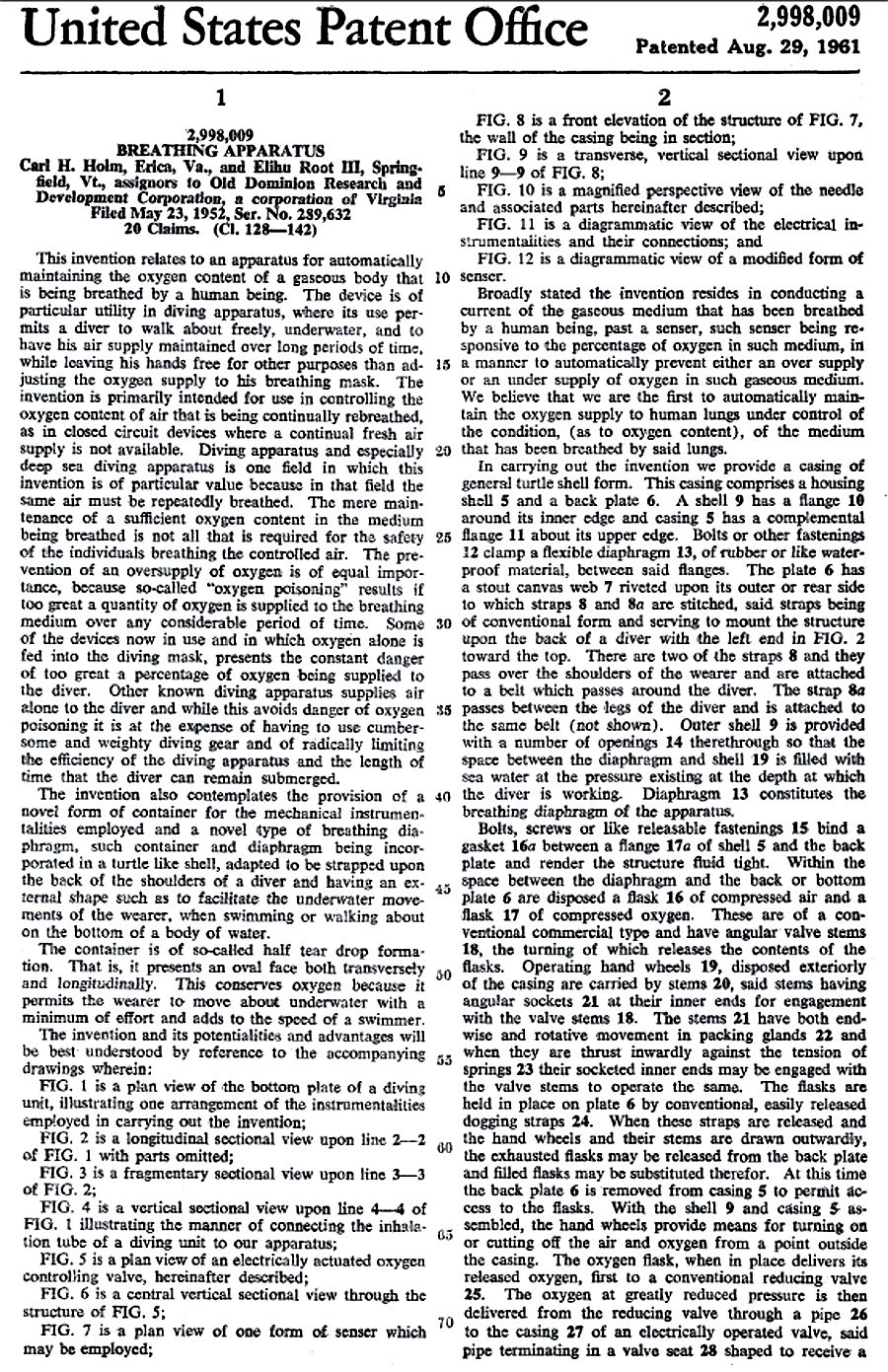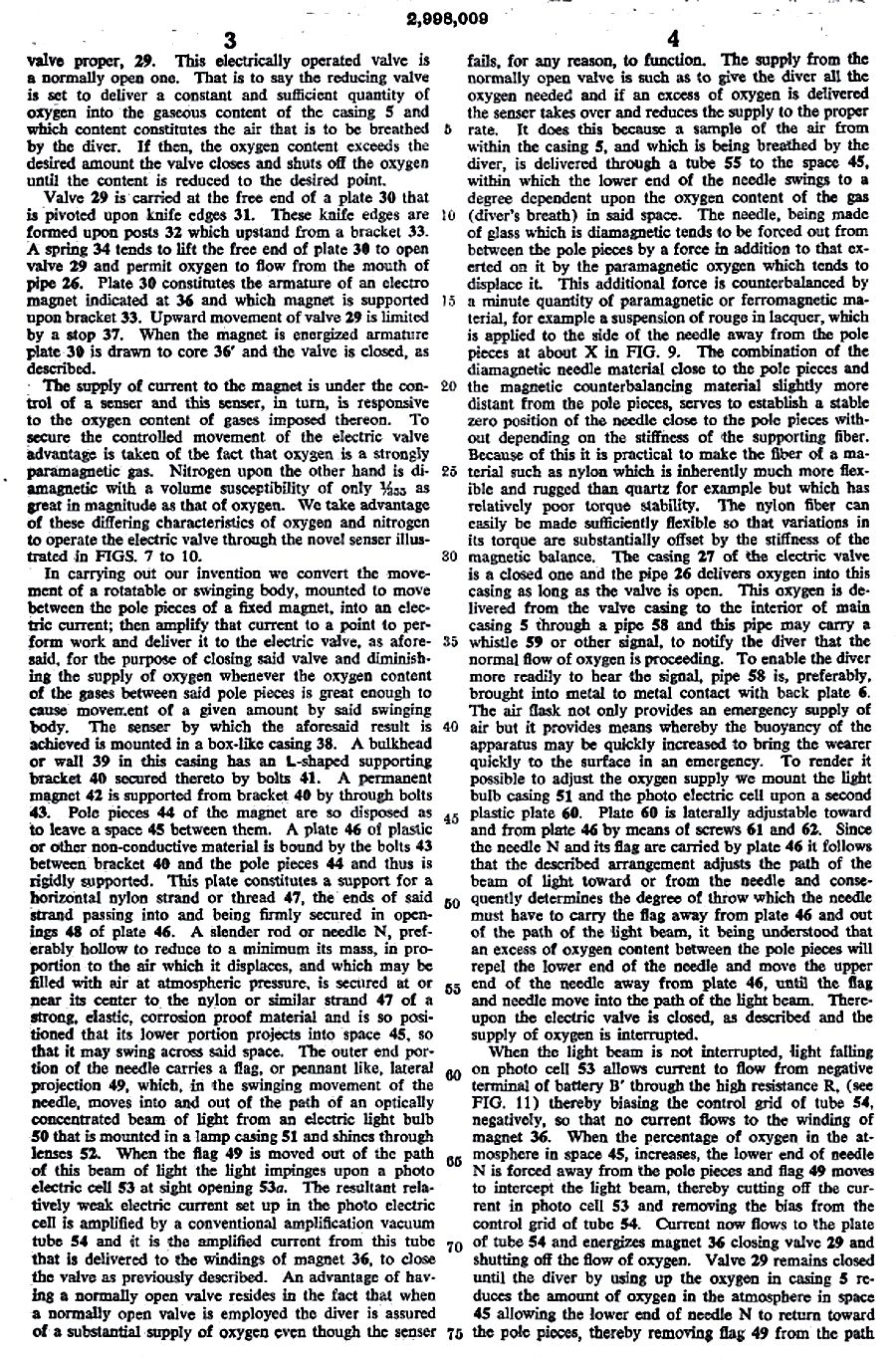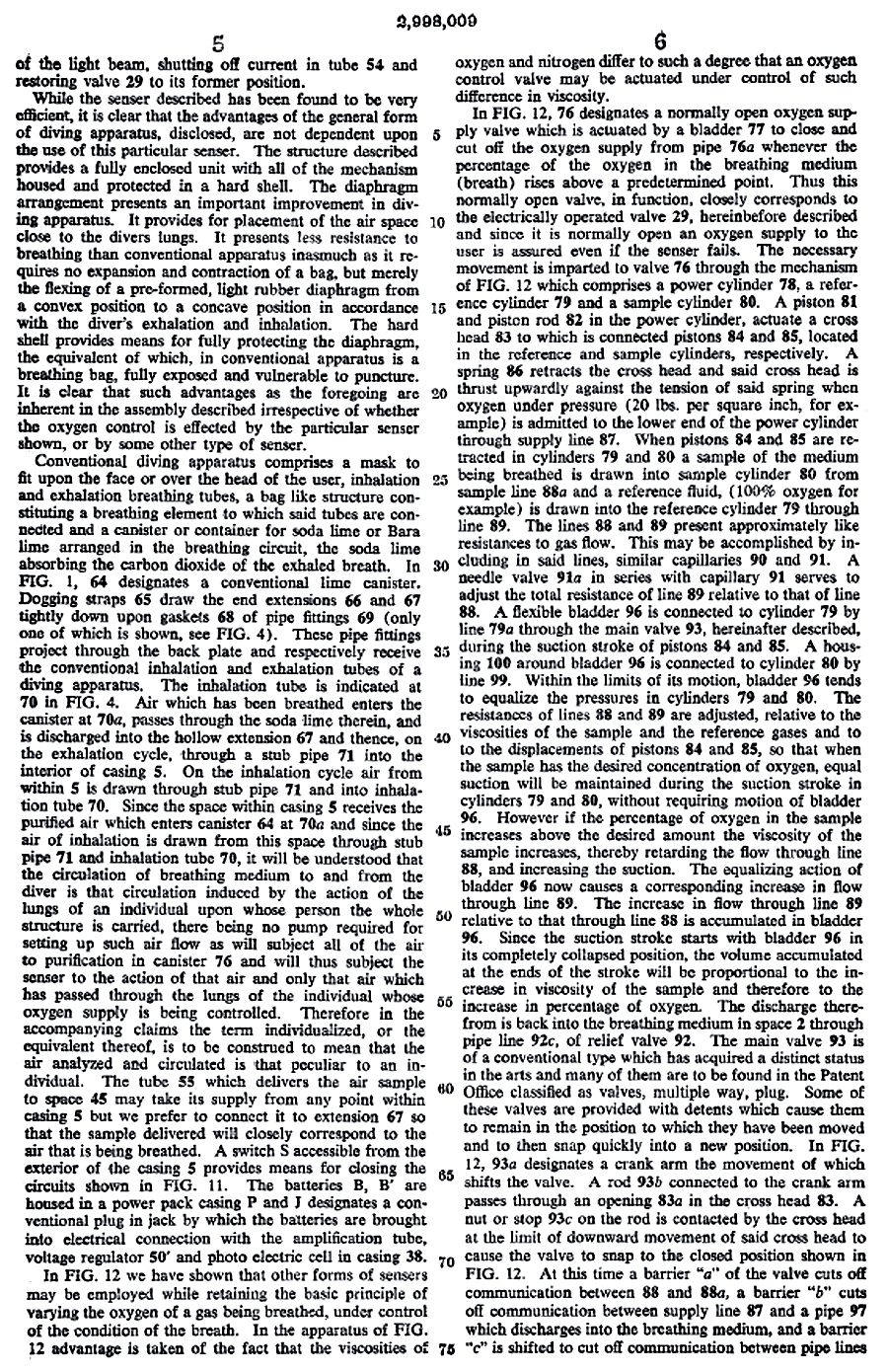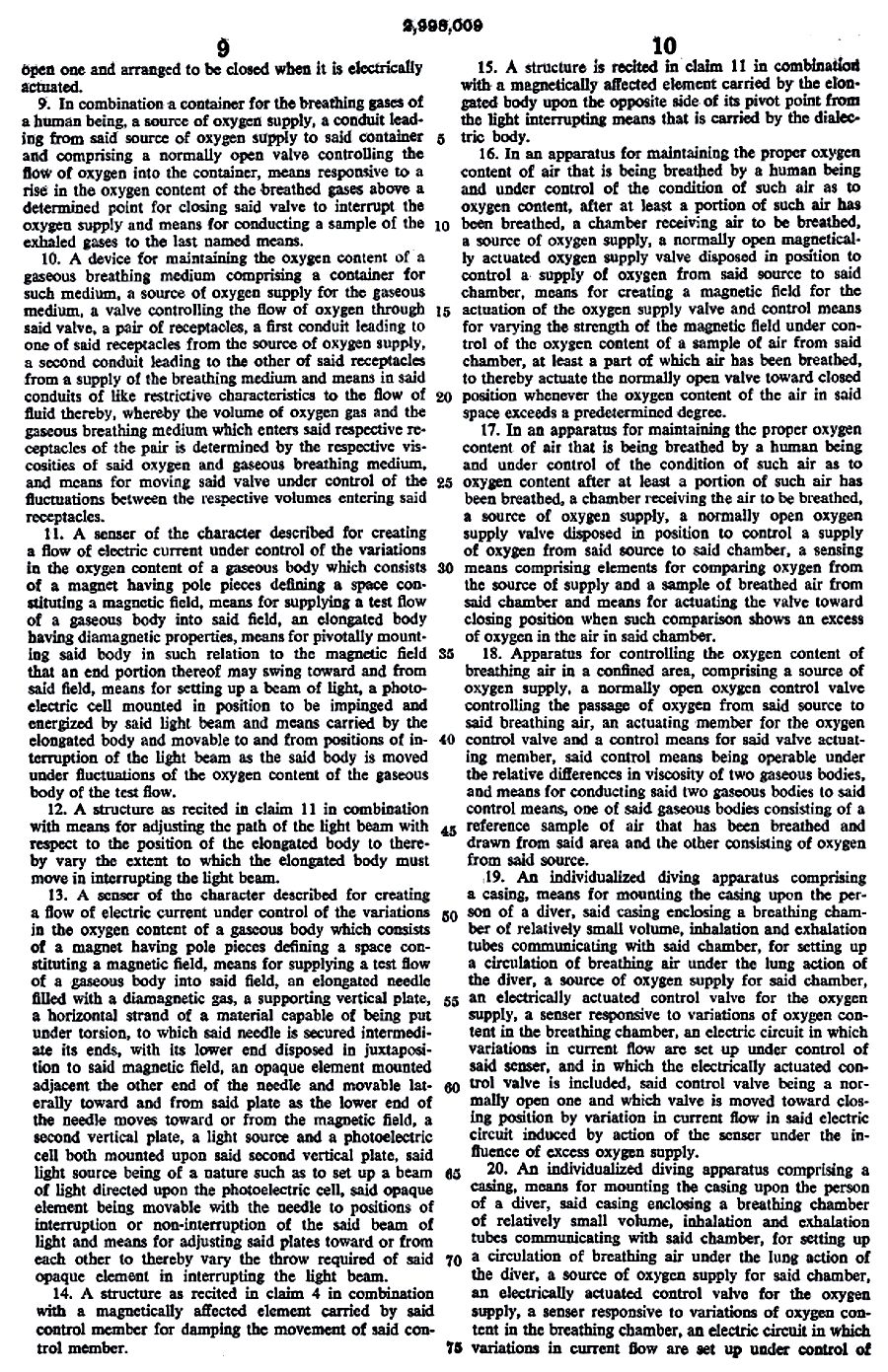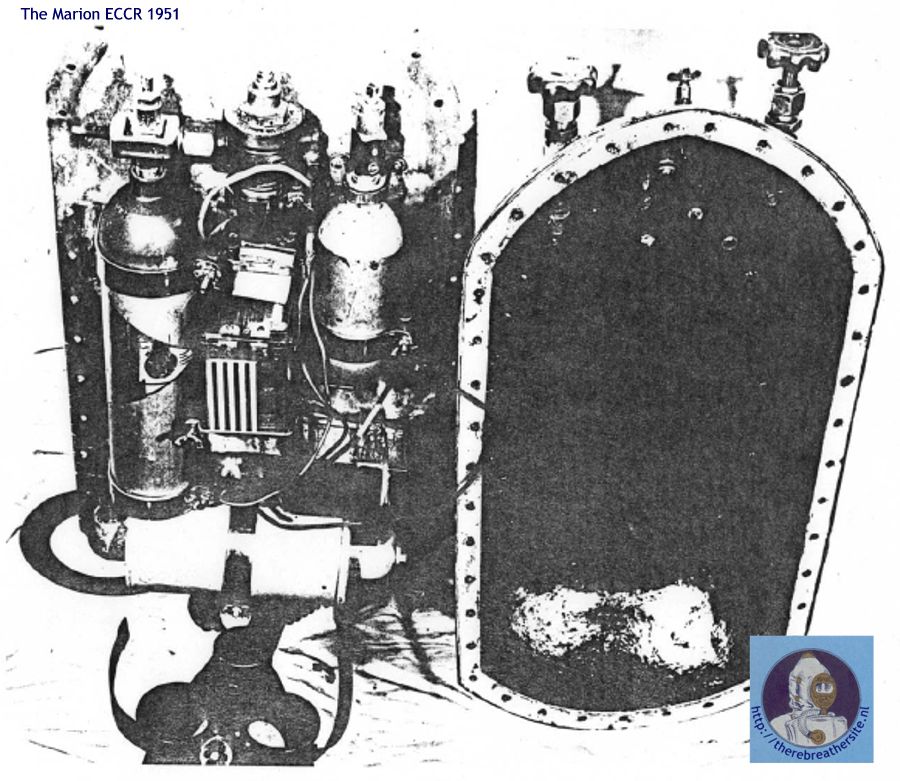Op het schrijven van dit artikel heb
ik me al een paar weken verheugt. Het is namelijk niet dagelijks dat ik
een nieuwe rebreather herontdek met zeer bijzondere eigenschappen. De
herontdekking van deze rebreather is echter wel een zeer bijzondere
gebeurtenis! Tijdens de speurtocht naar fabrikanten van rebreathers kwam
ik een aantal keren een naam tegen die vrijwel niet te traceren was.
Over de Old Dominion Development
Corporation is als bedrijf in ieder geval niet veel informatie te
vinden. Ik had de speurtocht naar de producten van deze firma dan ook al
eerder opgegeven. Tot ik bij toeval een patent tegen kwam waar de naam
van Carl Herluf Holm en Elihu Root III op voorkwamen. Bij nadere
beschouwing bleken deze heren de afgevaardigden van The Old Dominion
Research and Development Corporation. Uiteraard was toen mijn
belangstelling gewekt en las ik het betreffende patent aandachtig door.
Tijdens het lezen besefte ik dat ik hier iets heel bijzonders gevonden
had…
Tijdens mijn training als duiker en later als geïnteresseerde in de
historie en ontwikkelingen van rebreathers heb ik altijd gedacht dat
de “Electrolung rebreather” de allereerste rebreather was waarbij de
partiele zuurstofdruk geregeld werd. De Electrolung heeft de
reputatie de eerste unit te zijn waarbij de zuurstof druk constant
werd gehouden door meting van de partiele zuurstof druk. De meting
vond overigens plaats met een Polarografische zuurstof cel.
Intermezzo:
Polarographic Oxygen Sensors
The polarographic oxygen sensor is often referred to as a Clark Cell
[J. L. Clark (1822- 1898)]. In this type of sensor, both the anode
(typically silver) and cathode (typically gold) are immersed in an
aqueous electrolyte of potassium chloride. The electrodes are
separated from the sample by a semi-permeable membrane that provides
the mechanism to diffuse oxygen into the sensor. The silver anode is
typically held at a potential of 0.8V (polarizing voltage) with
respect to the gold cathode. Molecular oxygen is consumed
electrochemically with an accompanying flow of electrical current
directly proportional to the oxygen concentration based on Faraday’s
law. The current output generated from the sensor is measured and
amplified electronically to provide a percent oxygen measurement.
One of the advantages of the polarographic oxygen sensor is that
while inoperative, there is no consumption of the electrode (anode).
Storage times are almost indefinite. Similar to the galvanic oxygen
sensor, they are not position sensitive. Because of the unique
design of the polarographic oxygen sensor, it is the sensor of
choice for dissolved oxygen measurements in liquids. For gas phase
oxygen measurements, the polarographic oxygen sensor is suitable for
percent level oxygen measurements only. The relatively high sensor
replacement frequency is another potential drawback, as is the issue
of maintaining the sensor membrane and electrolyte.
Bron: Alpha Omega Instrument Corporation
De cellen in de Electrolung werkten op dit polaromagnetisch principe,
echter waren de anode en de kathode niet gemaakt van Zilver en Goud maar
van Zilver en Platina. Het permeabel membraan was gemaakt van Teflon.
Naast dit palaromagnetisch principe zijn er diverse
andere meettechnieken om de zuurstofdruk te meten. Vandaag de dag zitten
in onze Megalodons, Inspiration en MK-series rebreathers o.h.a.
electrochemical oxygen sensoren.
http://www.teledyne-ai.com/oem/diving.asp
Het patent wat ik echter las toonde een rebreather
die op basis van de partiele zuurstofdruk de pO2 constant hield door een
zuurstof meting op basis van het paramagnetische principe! Een
rebreather in die tijd die een zuurstof meting verrichtte en de zuurstof
druk bij regelde door aanvullende zuurstof injecties! De set was
opgebouwd op dezelfde wijze als de huidige electronisch geregelde
rebreathers. Een hogedruk zuurstof fles, een diluent verdungas een
scrubber en een gesloten loop en een volgelaat masker! Het grote
verschil met de Electrolung was echter de tijd waarin dit alles speelde.
Het patent voor de Electrolung werd in 1970 aangevraagd onder US Patent
3727626 welk in 1973 werd erkend. Het verhaal wat ik hier schrijf gaat
over een Marion Breathing Device welke in 1951 ! werd ontwikkeld.
De rebreather werd ontwikkeld en gepatenteerd. In
het patent vermelden de uitvinders op correcte wijze dat de
zuurstofmeting volgens het paramagnetisch principe niet door hen was
uitgevonden, maar door de nobelprijswinnaar Linus Pauling.
De toepassing van paramagnetische zuurstofmeting in een duiktoestel werd
voorzover hun bekend (patent tekstt) voor het eerst toegepast om een
constante zuurstof druk voor ademing aan een mens aan te bieden! Het
feit dat deze tekst in het patent is vermeld vormt een basis voor de
veronderstelling dat we hier te maken hebben met de eerste electronisch
geregelde rebreather!
Wat is een paramagnetische zuurstof meting? Dit
meetprincipe uitgevonden door Nobel prijs winnaar Linus Pauling
(1901-1994) US. Patent 2416344. Het principe berust op de eigenschap dat
zuurstof wordt aangetrokken door een sterk magnetisch veld. Deze
eigenschap wordt wel
paramagnetisme genoemd. Tussen twee magneten worden twee met
stikstof gevulde glazen bolletjes op een as geplaatst. Wordt er nu
zuurstof aangevoerd zal dit sterk door het magnetische veld worden
aangetrokken en zullen de glazen met stikstof gevulde bolletjes uit het
geconcentreerde veld wegdraaien. Daardoor zal de centrale as draaien
samen met het daarop gemonteerde spiegeltje. Een lichtbron die op de
spiegel is gefocust zal nu door de draaiing op een fotodiode schijnen
die een elektrische spanning afgeeft. Met deze spanning kan nu een
schakelaar worden bediend die de zuurstof injectie bedient. Is er veel
zuurstof dan zal de zuurstof injector gesloten zijn, de lichtbundel
schijnt niet op de diode. Zodra de zuurstofdruk afneemt zal de
lichtbundel langzaam naar de diode verdraaien tot de schakelaar weer
opent.
De Heren Holm en Root III deden deze uitvinding in
het begin van de 50-er jaren, vermoedelijk omstreeks 1951. Op 23 Mei
1952 hebben zij hun uitvinding aangeboden bij het Amerikaanse patent
bureau. De uitvinding is gedurende vele jaren onderzocht en uiteindelijk
op 29 Augustus 1961 gepatenteerd! Overigens was dit 42 dagen voor mijn
geboortedatum ;)
Het Amerikaanse patent 2998009 beschrijft in detail
de uitvinding van de Marion Device.
In hetzelfde patent is nog een tweede uitvinding
vastgelegd waarbij een zuurstof dossering wordt geregeld op basis van
viscositeit. Er bestaat een groot verschil in
viscociteit tussen zuurstof en stikstof. In het patent staat op
figuur 12 een schets van een dergelijke constructie.
Zie hiervoor figuur 12 in het patent
In de lange zoektocht naar verdere achtergronden
heb ik een uitvoerig test rapport van de NEDU gevonden waarin een lange
reeks testen staan beschreven van dit apparaat. Hieruit werd duidelijk
dat de unit in 1952 alles behalve foolproof was er er werden gedurende
ettelijke jaren vele modificaties uitgevoerd. De eerste scrubber die
werd toegepast was van een Lambertsen unit. De cilinders waren standaard
medische cilinders. Een standaard twee traps AIRCO automaat werd
gebruikt in de voedingslijn naar de elektronisch gestuurde klep. Een
zeer aansprekende zinsnede in het Nedu rapport sprak van test die een
werkbelasting simuleerde. De test bestond uit het gedurende 5 x per
minuut gedurende een periode van 10 minuten ademend uit de rebreather
een gewicht van 68,5 pond op te tillen tot een hoogte van 27,25 inch. De
parameters lijken niet willekeurig gekozen ;)
(De duiker verplaatst in 10 minuten dus 10 x 5 x
453,6x 68,5 ~ 1,5 metric ton!)

In het rapport van de Nedu staan een aantal
verwijzingen naar de foto’s die in het zelfde rapport zijn opgenomen.
Deze foto’s zijn de enige waarop ik de hand heb kunnen leggen. Samen met
de tekeningen uit het patent kunnen we ons een aardig beeld vormen van
de unit. Het zou echter geweldig zijn voor onze sport als we deze
oorspronkelijke units konden documenteren. Daarom zou ik dit artikel
willen afsluiten in de hoop u in de toekomst meer informatie te kunne
verschaffen over deze bijzondere uitvinding en ontwikkeling. U kunt uw
bijdrage leveren als u mij informatie in welke vorm dan ook zou kunnen
verschaffen over de volgende vragen:
-Wie heeft informatie over The
Old Dominion Research and Development Corporation
-Wie heeft informatie over Carl Herluf Holm en over
Elihu Root III
-Wie kan mij helpen aan betere foto’s van deze
units?
-Wie heeft informatie over de verdere ontwikkeling
van deze units?

